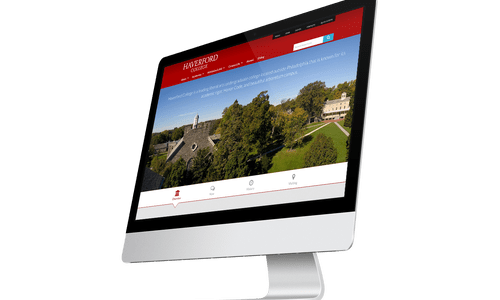
One of the easiest administrative tasks that businesses overlook is analyzing website data that can be gathered through free tools like Google Analytics. In fact, we’re going to be a bit provocative here—every business of every size should be accessing and addressing its website data at least once per quarter. Even if your business doesn’t employ pay-per-click ad campaigns, presumably you’re doing more than just letting your site sit there—you have a social media presence, you run sales, you’re producing content of one kind or another. All of those tactics produce measurable data that can be used to make more informed decisions about your web development process. It also makes other strategic UX design, like content strategy, that much easier to handle. Screen resolution, browser prevalence, mobile traffic, keyword searches—all of this information is readily available, and is actionable after as little as six to eight weeks. That might seem like a long time, but it’s better to have more data than less: an extended period for gathering not only provides more robust information for analysis, it allows traffic patterns to form, as well. You can track your busiest days, days when your social media presence is at its most engaged, and the referrers from which your traffic generates. With the default, Google-generated Analytics code, I’m able to address two major questions of our sister-company, left-click’s web traffic: what are our customers searching to find us? And, what kind of technology does our audience use to access our site? The first question can be answered in a variety of ways, but don’t worry—you’ll understand the nuance when we’re through. First we have organic keyword traffic, which tells me the terms that are leading customers to the store.
Next, we’ll look at browser resolution information. What would we use it for? Well, designers can take into account this information when developing a creative approach to your brand—if you know you never get viewed at 800x600, you can refine your strategy and optimize for the technology through which you’re most often viewed.
Finally, we have referral traffic, which means traffic earned from someone clicking on our link on another site (Twitter, Facebook, and other social networks are the usual suspects, but every company is different. For example, if you’re a development shop like Last Call, you might have employees who are very active on open-source forums like Drupal.org or GitHub.)
See how much insight you’re able to gain from five minutes, using a free tool? We cannot overstate the importance of considering this easy-to-access data when discussing your web strategy. Sometimes, this kind of consulting is available on an as-needed basis from your development partners—Last Call offers Creative Services packages that are customizable for the scale of any project. And this is all without customizing the code—that’s another topic for another time. Next we’ll touch on creating goals and funnels to really get granular with your data.




